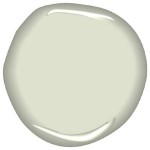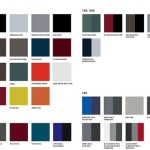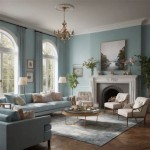What Is The Best Paint Color For a Living Room?
Selecting the best paint color for a living room involves a complex interplay of factors. There's no universally "best" color; rather, the ideal choice depends heavily on the room's existing features, the desired atmosphere, and the personal preferences of the occupants. This article explores key considerations and popular color choices that can guide individuals in finding the most suitable paint color for their living room.
Choosing a paint color is more than simply picking a shade that is aesthetically appealing. It’s about understanding how color influences mood, interacts with light, and complements the existing decor. A well-chosen color can transform a living room from a mundane space into a welcoming, stylish, and emotionally resonant environment.
Understanding the Impact of Color Psychology
Color psychology plays a significant role in how individuals perceive and experience a space. Different colors evoke different emotions and associations. Understanding these psychological effects is crucial in selecting a paint color that aligns with the desired atmosphere of the living room.
For example, blue is often associated with tranquility, serenity, and stability. It can create a calming and relaxing atmosphere, making it suitable for living rooms intended for relaxation and unwinding. However, darker blues can sometimes feel cold or somber, so it's important to choose a shade that is balanced and inviting.
Green is another popular choice, symbolizing nature, growth, and harmony. It can create a refreshing and rejuvenating atmosphere, ideal for living rooms that aim to connect with the outdoors. Lighter greens tend to be more uplifting and airy, while darker greens can add depth and sophistication.
Yellow is associated with optimism, energy, and happiness. It can create a cheerful and welcoming atmosphere, making it suitable for living rooms that are intended for socializing and entertainment. However, bright yellows can be overwhelming, so it's important to choose a softer or more muted shade.
Red is a bold and energetic color associated with passion, excitement, and warmth. While it can add a dramatic and stimulating touch to a living room, it's often best used sparingly, as it can be overwhelming in large doses. Red accents or a single statement wall can be effective ways to incorporate this color into the space.
Neutral colors, such as white, gray, beige, and cream, offer versatility and flexibility. They provide a blank canvas that allows furniture and accessories to take center stage. Neutral colors can create a sense of spaciousness and airiness, making them suitable for smaller living rooms. However, it's important to add texture and visual interest through furniture, artwork, and decorative elements to prevent the space from feeling bland or sterile.
By considering the psychological effects of different colors, individuals can make informed decisions about the paint color that best aligns with their desired living room atmosphere.
Considering Lighting and Room Orientation
The amount and type of natural and artificial light in a living room significantly impact how a paint color appears. Room orientation (north, south, east, or west facing) also plays a crucial role, as it affects the intensity and quality of natural light throughout the day.
Living rooms with ample natural light can handle a wider range of colors, including darker and more saturated shades. However, it's important to consider the direction of the light. South-facing rooms receive warm, bright light throughout the day, which can intensify warm colors like yellow and orange. North-facing rooms receive cooler, more diffused light, which can make cool colors like blue and green appear even cooler. East-facing rooms receive warm light in the morning and cooler light in the afternoon, while west-facing rooms receive cooler light in the morning and warm light in the afternoon.
Living rooms with limited natural light require careful color selection to maximize brightness and create a sense of spaciousness. Lighter colors, such as white, off-white, and pale pastels, reflect light and can help to brighten up the space. Using a paint with a higher sheen, such as eggshell or satin, can also help to reflect light. Avoiding dark or overly saturated colors is generally recommended, as they can absorb light and make the room feel smaller and darker.
Artificial lighting also plays a crucial role in how a paint color appears. The type of light bulb (incandescent, fluorescent, or LED) and the color temperature of the light (warm or cool) can affect the perceived color of the walls. It's important to test paint samples under different lighting conditions to ensure that the color looks appealing both during the day and at night.
By considering the lighting conditions and room orientation, individuals can select a paint color that complements the natural and artificial light in the living room and creates the desired ambiance.
Complementing Existing Decor and Architectural Features
The paint color of a living room should complement the existing decor, including furniture, flooring, window treatments, and architectural features. A cohesive and harmonious color scheme can create a sense of unity and balance in the space.
Before selecting a paint color, it's important to assess the colors and styles of the existing furniture and accessories. If the furniture is primarily neutral, a wider range of paint colors can be considered. However, if the furniture is brightly colored or patterned, it's important to choose a paint color that complements those colors without clashing or overwhelming the space. A color wheel can be a useful tool for identifying complementary colors.
The flooring also plays a significant role in determining the best paint color. If the flooring is dark, lighter paint colors can help to brighten up the space and create a sense of contrast. If the flooring is light, darker paint colors can add depth and drama. The flooring material (wood, tile, carpet) also influences the overall aesthetic of the room.
Architectural features, such as crown molding, built-in shelves, and fireplaces, can also influence the choice of paint color. These features can be highlighted with a contrasting color or blended in with a similar color. Using a different sheen level on architectural details can also add visual interest.
Consider the style of the living room when selecting a paint color. For a traditional living room, classic and timeless colors, such as neutrals, soft blues, and greens, may be appropriate. For a modern living room, bolder and more contemporary colors, such as grays, blacks, and whites, can be used. For a bohemian living room, warm and earthy colors, such as browns, oranges, and reds, can create a relaxed and inviting atmosphere.
By considering the existing decor and architectural features, individuals can select a paint color that complements the overall style of the living room and creates a cohesive and harmonious space.
In addition to the aforementioned key points, other considerations can influence the final decision. These include the size of the living room, the purpose of the space, and personal preferences. A smaller living room may benefit from lighter colors to create an illusion of spaciousness, while a larger living room can handle bolder and more saturated colors. If the living room is primarily used for relaxation, calming colors like blue or green may be ideal. If the living room is primarily used for entertaining, more vibrant and energetic colors like yellow or orange may be appropriate.
Ultimately, the best paint color for a living room is a personal choice that reflects the individual's style and preferences. By considering the factors discussed in this article, individuals can make informed decisions and create a living room that is both aesthetically pleasing and emotionally resonant.
It's always recommended to test paint samples on the walls before committing to a full paint job. Paint colors can look different in different lighting conditions and at different times of day. Testing paint samples allows individuals to see how the color will actually look in their living room before making a final decision. Applying two coats of the sample paint is best to see the true color.
Finally, consider the paint finish. Different paint finishes have different levels of sheen and durability. Flat paint has no sheen and is best for hiding imperfections. Eggshell paint has a low sheen and is more durable than flat paint. Satin paint has a medium sheen and is even more durable. Semi-gloss paint has a high sheen and is very durable, but it can also highlight imperfections. Consider the level of traffic in the living room when choosing a paint finish. For high-traffic areas, a more durable finish is recommended.

30 Living Room Color Ideas Best Paint Decor Colors For Rooms

Best Paints For Living Room Walls In 2024

Best Living Room Paint Colors For 2024 Brock Built

50 Best Living Room Paint Ideas Colors

The Best Living Room Paint Colors Aren T Just Shades Of White Domino
The Best Paint Colors For Living Rooms In 2024

50 Best Living Room Paint Ideas Colors

Dulux Living Room Paint Colours

Designers Say These Are The Best Paint Colors For Your Living Room Color Schemes

The Most Popular Living Room Colours For 2024
Related Posts








